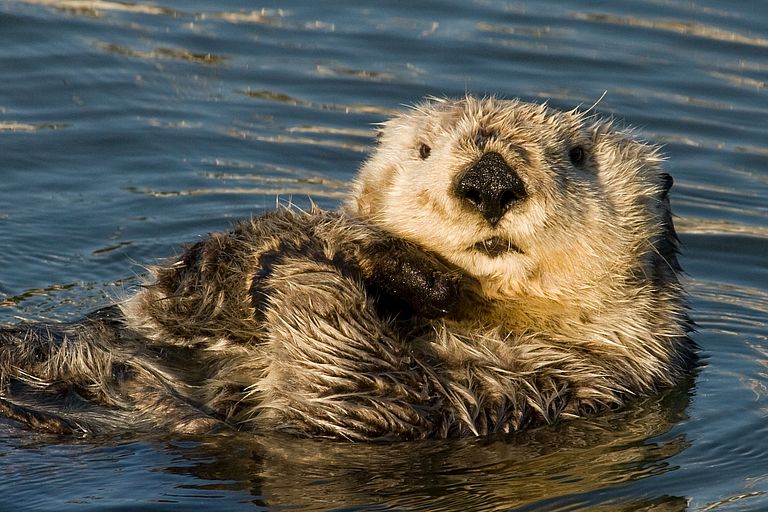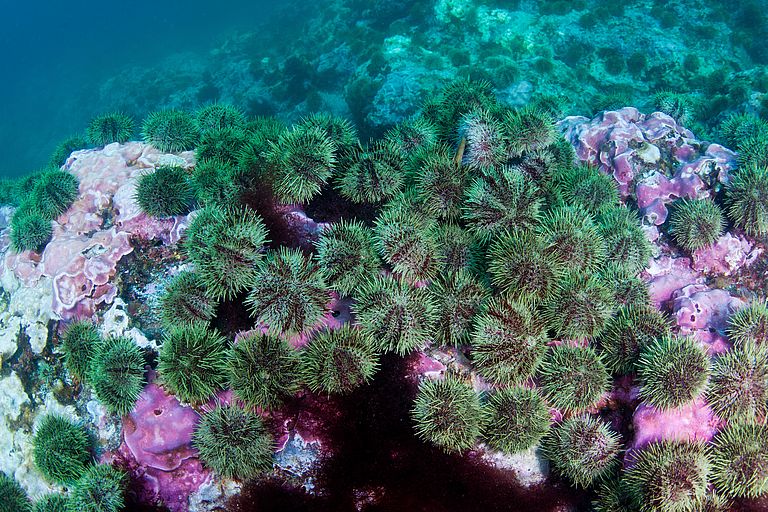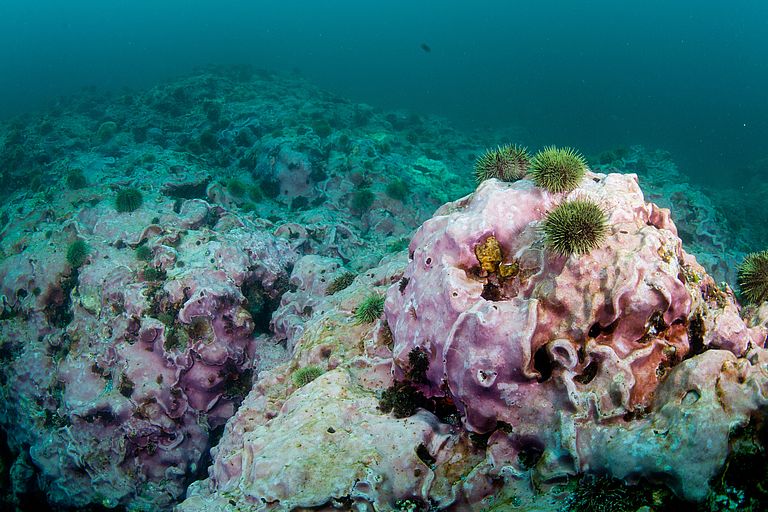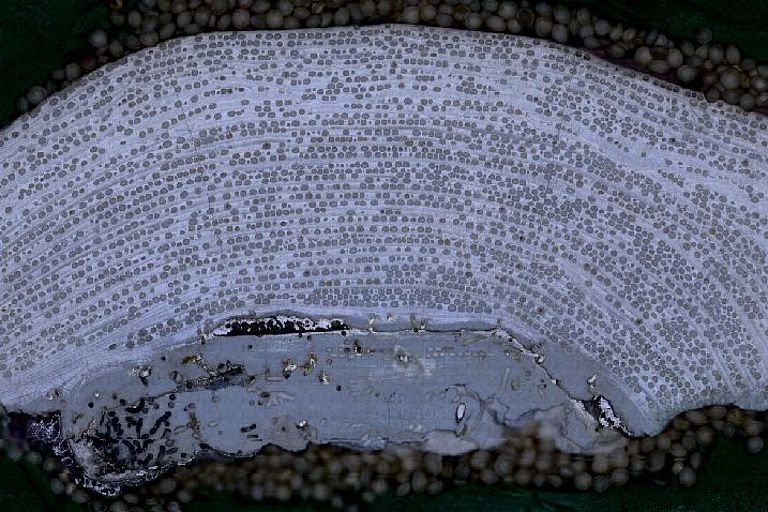Sea otter protection could mitigate consequences of climate change
Limestone-dating at GEOMAR supports complex ecosystem study in Alaska
Large kelp forests growing on reefs formed by calcareous algae are characteristic for the ecosystems off the Aleutian archipelago (Alaska, USA). But these calcareous reefs could disappear in the near future. The reasons for this are, among others, the warming of the oceans and the decreasing pH-values of the seawater due to increasing carbon dioxide uptake. An additional stress factor is the severely declining population of sea otters. This is shown in a study conducted by an international research group lead by marine biologist Dr. Douglas Rasher from the Bigelow Laboratory for Ocean Science (Maine, USA) with the participation of the GEOMAR Helmholtz Centre for Ocean Research Kiel. The results have been published today in the international journal Science.
The reefs off the coast of the Aleutian Islands are formed by the calcifying red alga Clathromorphum nereostratum. The algae are a natural prey of sea urchins. These, in turn, are hunted and eaten by sea otters. However, by the 1990s the Sea otter population had already shrunk to such an extent that they can no longer fulfill their function as predators in the ecosystem. As a result, the number of sea urchins has exploded and they have begun to significantly change the appearance of the coastal ecosystem. They already have significantly thinned the dense kelp forests and are now attacking their basis, the calcareous algae reefs.
The algae Clathromorphum produces a skeleton of limestone that normally protects it from enemies. But the sea urchins bore through the protective layer—a process that has become easier due to climate change. ‘Ocean warming and acidification are making it difficult for calcifying organisms to produce their shells, or in this case, the alga’s protective skeleton,’ says Douglas Rasher. ‘This critical species has now become highly vulnerable to urchin grazing – right as urchin abundance is peaking. It’s a devasting combination’.
The sea urchin population increased massively off the Aleutian Islands before, when the sea otter was intensively hunted for its fur in the 1700s and 1800s. At that time the Clathromorphum reefs could prevail. ‘However, the situation has drastically changed this time around. Our research shows that sea urchin grazing has become much more lethal in recent years due to the emergent effects of climate change,’ Rasher emphasizes.
Since the algae adds a new layer to its limestone skeleton every year, it forms growth bands like annual tree rings. These bands also archive whether and how massively sea urchins have grazed each year. This enabled the team to reconstruct the past of the ecosystem. It found that grazing rates have recently been increasing in conjunction with rising seawater temperatures.
The samples of the algae limestone were dated using the uranium-thorium method at GEOMAR in Kiel to obtain a clear chronology of reef development. ‘Such comprehensive ecosystem reconstructions as in this case are only possible when many different disciplines and analytical methods come together. We have been working together with our colleagues in the USA and Canada for many years. Therefore, we were particularly pleased to participate in this study, which was able to relate the consequences of climate change to the loss of important predators and the disappearance of kelp forests’, says physicist Dr. Jan Fietzke from GEOMAR.
‘It is well documented that humans influence the earth's ecosystems by changing the climate and decimating large predators. But scientists rarely study these processes together’, Dr. Rasher emphasizes. But the discovery of this connection between predators and climate change can also be a source for hope. It is true that direct efforts to combat progressive warming and ocean acidification are the most important measures to contain climate change and its effects on a global scale. Regionally, however, the protection of important species—the sea otter in this particular case—can also help to stabilize an entire ecosystem.
Reference:
Rasher, D. B., R. S. Steneck, J. Halfar, K. J. Kroeker, J. B. Ries, T. Tinker, P. T. W. Chan, J. Fietzke, N. A. Kamenos, B. H. Konar, J. S. Lefcheck, C. J. D. Norley, B. P. Weitzman, I. T. Westfield, J. A. Estes (2020): Keystone predators govern the pathway and pace of climate impacts in a subarctic marine ecosystem. Science, https://doi.org/10.1126/science.aav7515






